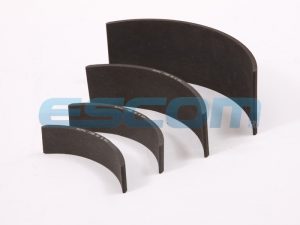Principal drum brake’s components are two curved shoes, made of cast iron, varnished iron or aluminium, lined with friction linings, constrained to a plate, connected to both the vehicle fixed part and a rotary part. On the plate, between the shoes, there are also one or two hydraulic cylinders with connected piston, and, on rear brakes, the mechanic control device. The drum is fixed to a flange of the hub and turns together with the wheel. Instead, the shoes supporting plate is linked to the axle shaft, or the suspension, and cannot turn. The drum is a momentous component: it prevents water and dirt from penetrating inside the brake, by maximizing its endurance and grip. The brake is made of three fundamental parts: semicircular shoes, actuator brake cylinder and adjustment mechanism. During the braking, the hydraulic fluid is pushed by the brake pump in direction of brake cylinders, where makes the piston move outwards. At this point, pistons push shoes against the drum inner surface, by braking the wheels movement, up to their arrest. Pulling the brake handle, shoes are equally pushed against the drum by cables and tie-rods which are connected to the handle. When the pedal (either the handle) is released, one or more recall springs, linked to the shoes, bring them back to a rest condition.








